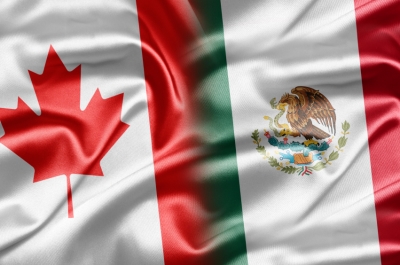Ken Roberts, author and FORBES collaborator, is also the founder of WorldCity. He has published annual TradeNumbers publications around the US, from Seattle to Miami, Los Angeles to New York and numerous points in between. Monthly, his team uploads more than 10 million pages and page views of Census data at ustradenumbers.com, on hundreds of airports, seaports, countries, and export and import commodities.
On his latest FORBES collaboration, Mr. Roberts says that new data suggests Mexico is likely to fall short of first-ever No. 1 Annual Ranking as USA top commercial partner, basically due to bad decisions taken by the AMLO admnistration.
Mexico is not likely to finish 2019 as the nation’s top-ranked trade partner for the first time ever, despite having ranked No. 1 most of the year.
But, boy oh boy, it is likely to be quite close.
Canada will likely return to its familiar perch as the top U.S. trade partner, a ranking it ceded in 2015 to China but had held for decades prior.
China has slipped to No. 3 due to the ongoing trade war with the United States.
While the answer won’t be revealed until early February, when the U.S. Census Bureau releases the annual statistics, I looked at the data for October, which was released Wednesday, as well as data for November and December for the previous six years.
I did the math so you don’t have to.

Through October, Mexico and Canada each account for 15% of all U.S. trade, with Mexico’s total slightly less than 1% percent greater than Canada’s.
That difference is about $4.2 billion. Remember this number.
In the month of October, Canada’s trade was greater than Mexico’s, and the difference between the two on an annualized basis narrowed slightly.

Looking back at the last six years, Mexico’s total trade has fallen shy of Canada’s in the months of November and December every year and by at least 4.8% (in 2016) and 4.84% (in 2018).
Those differences in those two years, when the differences were the lowest, are $4.14 billion in 2016 — enough for Mexico to retain its top ranking — and $4.46 billion in 2018 — not quite enough.
In the other four years, the difference was greater, ranging from $6.09 billion to $19.16 billion.
About the only thing that could totally derail Canada’s ascension to the top rank would be a steep decline in the price of oil. That’s because the value of Canada-U.S. oil trade is about six times that of Mexico-U.S. oil trade this year, roughly equal on trade in gasoline and other refined petroleum products.
While many a fortune has been squandered predicting future oil prices, I would be surprised if the price of oil fell so far, so fast that U.S. trade with Canada, the largest supplier of foreign oil to the United States, that Mexico would be able to hold on to the top spot.
Source: FORBES

